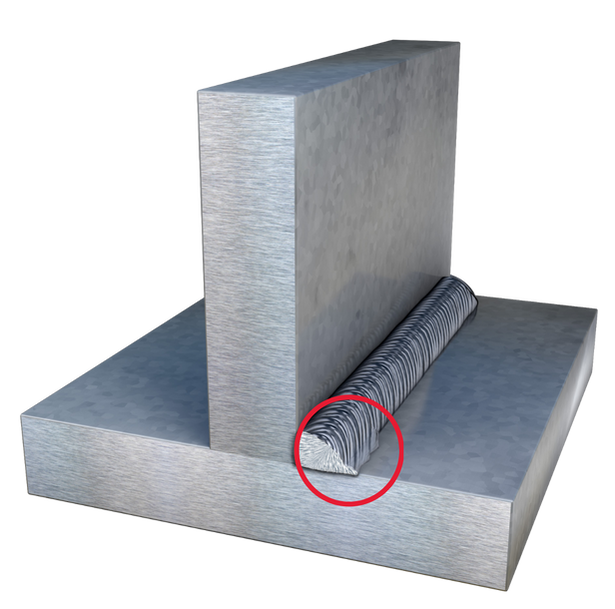Preventing Weld Undercut Demystified: Methods for Success
Understanding the Art of Welding: Just How to Stay Clear Of Undercut Welding Issues for Flawless Fabrication Results
By understanding the origin triggers of undercut welding and executing effective methods to prevent it, welders can boost their craft to brand-new levels of quality. In the quest of flawless manufacture results, mastering the art of welding to prevent undercut issues is not simply an ability however a requirement for those striving for excellence in their work.
Recognizing Undercut Welding

To protect against undercut welding, welders need to ensure proper welding parameters, such as changing the present, voltage, travel speed, and preserving the appropriate electrode angle. By comprehending the causes of undercut welding and executing precautionary steps, welders can accomplish premium, structurally sound welds.
Reasons For Undercut in Welding
Understanding the elements that contribute to damage in welding is essential for welders to generate high-grade, structurally audio welds. Damaging happens when the weld metal does not correctly fill the groove formed in between the base steel and the previously deposited weld steel. Numerous aspects can result in undercut in welding. One usual cause is excessive warmth input. Welding at heats for extended durations can lead to the base metal thawing even more than desired, leading to damage. Insufficient welding current or inaccurate welding speed can also add to undercut. Inadequate current may not supply enough warmth to melt the base and filler steels sufficiently, while excessive rate can prevent appropriate fusion, triggering undercut. Additionally, incorrect electrode angles or wrong torch adjustment techniques can produce locations of low weld steel deposition, advertising undercut. Comprehending these reasons and implementing appropriate welding strategies can help stop undercutting problems, making certain strong and long lasting welds.
Techniques to stop Undercutting

To alleviate the threat of damaging in welding, welders can utilize critical welding strategies focused on improving the high quality and stability of the weld joints. One effective method is to change the welding specifications, such as voltage, existing, and travel speed, to ensure proper warm input and deposition. Preserving an appropriate electrode angle and making sure constant travel speed can additionally aid protect against undercut. In addition, utilizing the right welding method for the particular joint arrangement, such as weave or stringer grains, can contribute to decreasing undercutting. Preventing weld undercut.
Furthermore, Web Site appropriate joint preparation, consisting of guaranteeing tidy base materials free of impurities and using the ideal welding consumables, is vital in avoiding undercut issues. Utilizing back-step welding strategies and managing the weld grain profile can additionally help distribute warmth evenly and decrease the risk of undercut. Routine evaluation of the weld joint during and after welding, as well as applying quality control measures, can help in detecting and attending to damaging problems immediately. By carrying out these techniques carefully, welders can attain remarkable construction results with marginal undercut defects.
Importance of Proper Welding Specifications
Picking and maintaining appropriate welding specifications is crucial for achieving successful welds with very little problems. Welding parameters refer to variables such as voltage, existing, take a trip rate, electrode angle, and protecting gas flow price that straight affect the welding process. These criteria must be thoroughly adjusted based on the sort of product being welded, its density, and the welding strategy utilized.
Proper welding criteria make certain the ideal amount of heat is put on melt the base steels and filler material uniformly. If the criteria are set expensive, it can bring about extreme heat input, creating distortion, spatter, or burn-through. On the various other hand, if the specifications are too reduced, incomplete combination, lack of infiltration, or undercutting may occur.
High Quality Assurance in Welding Workflow

Conclusion
Finally, mastering the art of welding requires a thorough understanding of pop over to these guys undercut welding, its reasons, and strategies to stop it. By making sure appropriate welding parameters and implementing top quality guarantee methods, flawless manufacture outcomes can be achieved. It is essential for welders to consistently strive for excellence in their welding procedures to prevent undercut issues and produce premium welds.
Undercut welding, a common issue in welding procedures, occurs when the weld steel doesn't properly load the groove and leaves a groove or depression along the bonded joint.To avoid undercut welding, welders should make sure proper welding criteria, such as changing the existing, voltage, travel rate, and maintaining the proper electrode angle. Insufficient welding existing or inaccurate welding rate can also add to damage.To alleviate the risk of undercutting in welding, welders can employ critical welding methods intended at enhancing the high quality and honesty of the weld joints.In conclusion, understanding the art of welding requires a complete understanding of undercut welding, its causes, and techniques to avoid it.